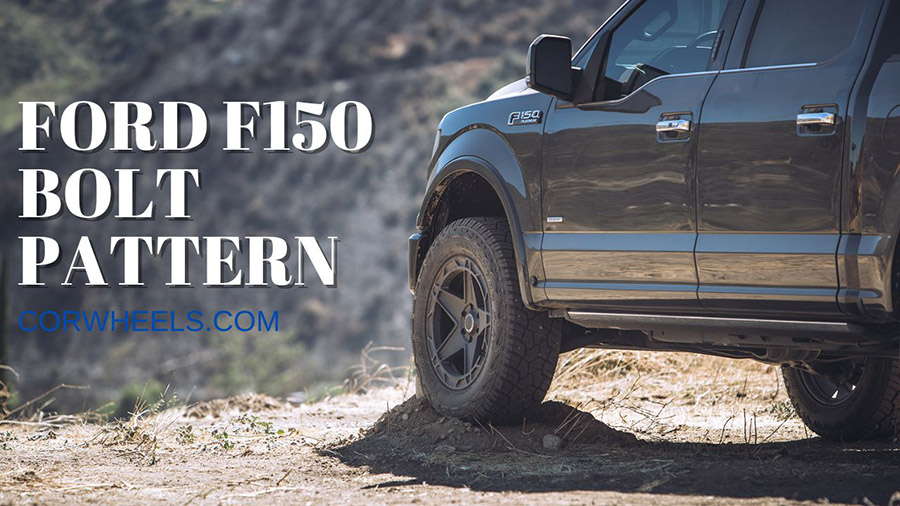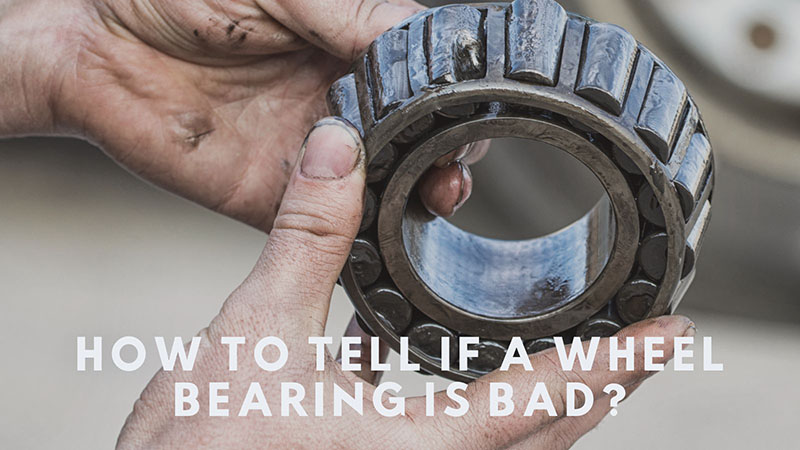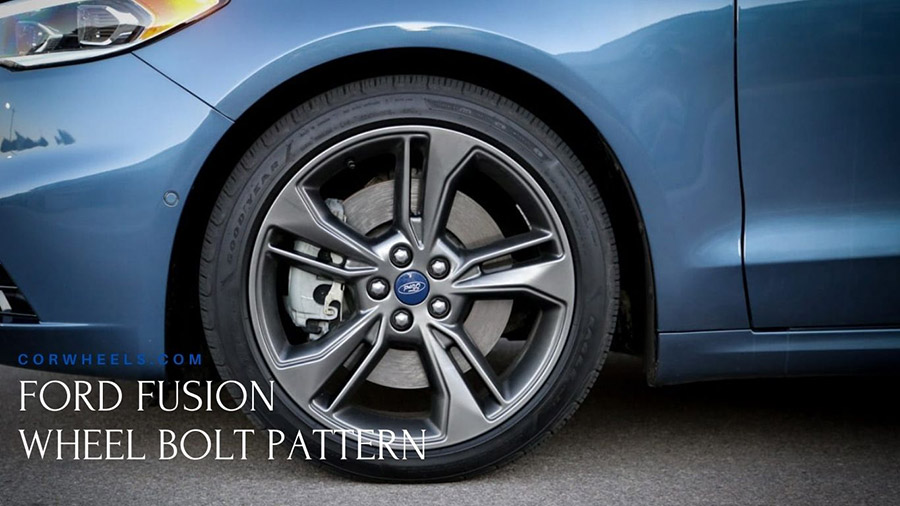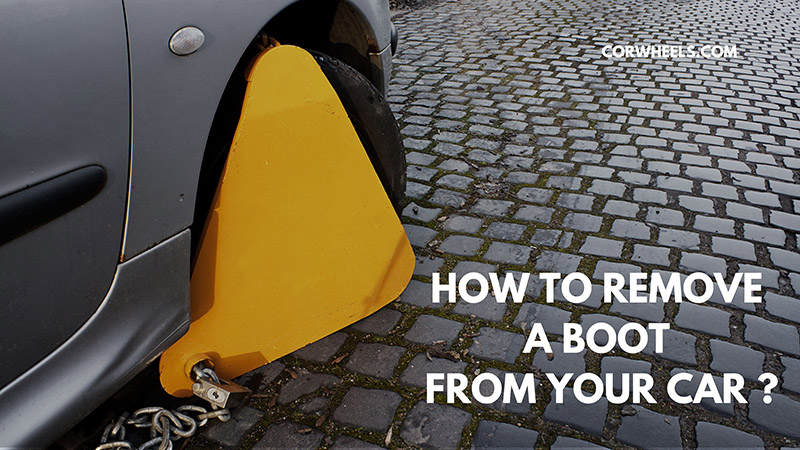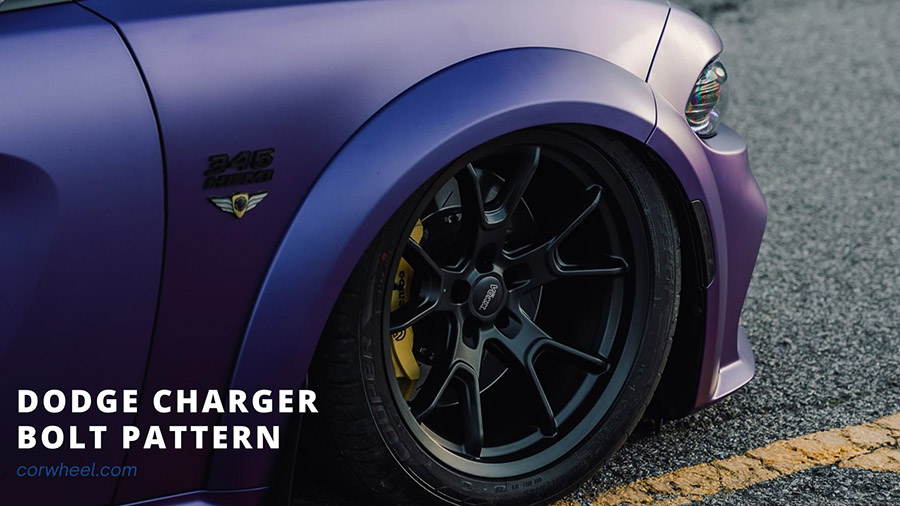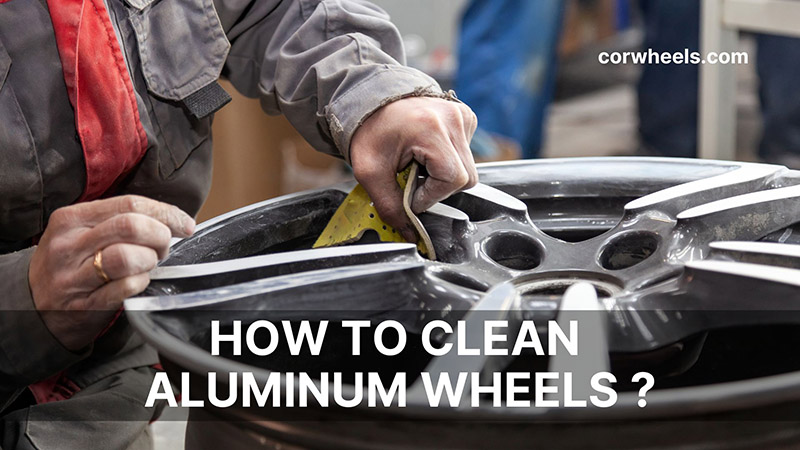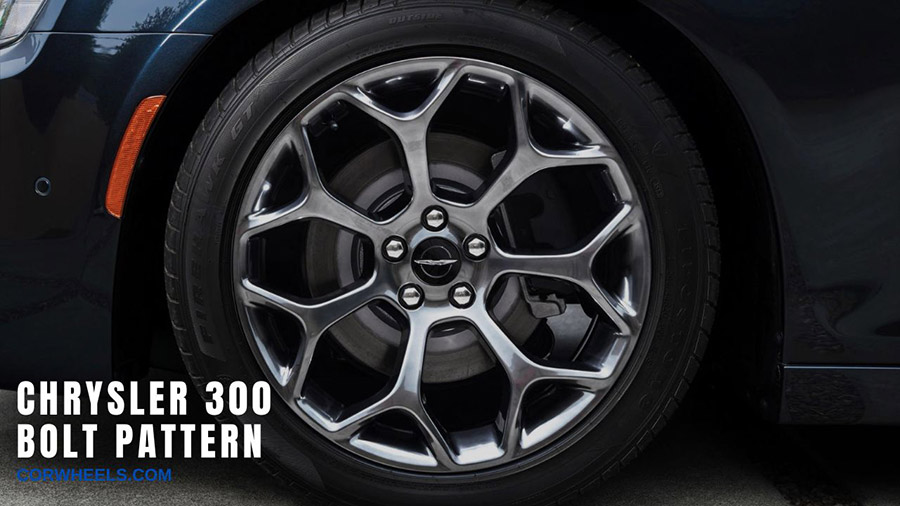One of the common beginner mistakes for Ford F150 drivers is to completely ignore the lug pattern during car upgrades or wheel replacements. As a result, bad fuel economy, lackluster hub fit, and even car collisions are only to be expected.
To save you from such disasters, we have compiled all there is to know about the Ford F150 lug pattern – along with other car and wheel specs. Keep scrolling!
In this article:
What Is The Ford F150 Wheel Bolt Pattern?
Starting from the fourth-gen (2004 onwards), all Ford F150 models were changed to 6 x 135 mm or 6 x 5.31 in pattern. So there are 6 lug holes evenly spaced in an imaginary circle of 135 mm in diameter.
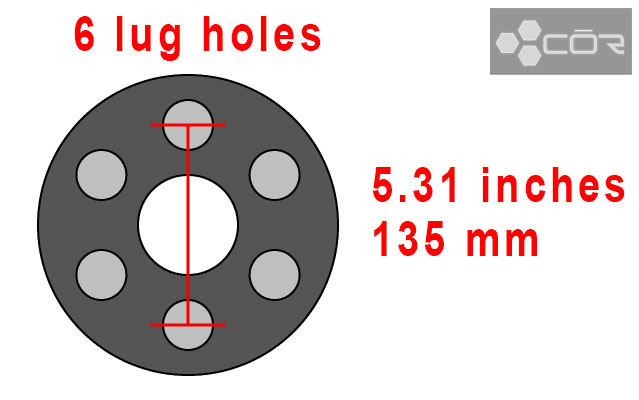
All pre-1997 Ford F150 models had a lug pattern of 5 x 139.7 or 5 x 5.5. The third-gen (1997 to 2003) incorporated 5 x 135 (5 x 5.31).
Check out other below-listed specifications:
1. First Gen: Ford F150 VIII (from 1987 to 1991):
1a. 1987 to 1999:
- Bolt pattern: 5 x 139.7 (mm); 5 x 5.5 (inches)
- Power: 147 PS/ 108 KW/ 145 HP
- Engine type: Petrol, I6, 4.9 L
- Hub bore/Center hole bore: 87.1 mm
- Thread: 1/2″ – 20 UNF
- Rim width: 6”, 7”
- Rim diameter: 15 inches
- Tightening Torque Specifications: 135 Nm
- Wheel Offset Range: -2 – 2; 8 – 12
1b. 1990 and 1991:
- Bolt pattern: 5 x 139.7 (mm); 5 x 5.5 (inches)
- Power: 128 PS/ 94 KW/ 126 HP
- Engine: Petrol, I6, 3.8 L
- Hub bore/Center bore diameter: 87.1 mm
- Thread: 1/2″ – 20 UNF
- Rim width: 6”, 7”
- Rim diameter: 15 inches
- Tightening Torques: 135 Nm
- Offset Range: -2 – 2; 8 – 12
2. Second Gen: Ford F150 IX (from 1992 to 1996):
- Bolt circle pattern: 5 x 139.7 (mm); 5 x 5.5 (inches)
- Power: 147 PS/ 108 KW/ 145 HP
- Engine: Petrol, I6, 4.9 L
- Hub bore/Center bore hub: 87.1 mm
- Thread: 1/2″ – 20 UNF
- Rim width: 6”, 7”
- Rim diameter: 15 inches
- Tightening Torques: 135 Nm
- Offset Range: -2 – 2; 8 – 12
3. Third Gen: Ford F150 X (from 1997 to 2003):
3a. 1997 to 1999
- Bolt pattern: 5 x 135 (mm); 5 x 5.31 (inches)
- Power: 208 PS/ 153 KW/ 205 HP
- Engine: Petrol, V6 engine
- Hub bore/Center bore: 87.1 mm
- Thread: 1.75 x M12
- Rim width: 7”, 7.5” (for all years); 7” (for 1999)
- Rim diameter: 16”, 17”
- Tightening Torques: 204 Nm
- Offset Range: 12 – 16
- Trim Levels: XLT, XL, Standard
3b. 2000 to 2003
- Bolt pattern: 5 x 135 (mm); 5 x 5.31 (inches)
- Engine: Petrol, V6 engine
- Hub bore/Center bore: 87.1 mm
- Thread: 2.0 x M14
- Rim width: 7 inches
- Rim diameter: 16 inches
- Tightening Torques: 204 Nm
- Offset Range: 12 – 16
- Power:
- 208 PS/ 153 KW/ 205 HP (for 2000)
- 205 PS/ 150.6 kW/ 202 HP (for 2001 to 2003)
4. Fourth Gen: Ford F150 XI (from 2004 to 2008):
- Bolt pattern: 6 x 135 (mm); 6 x 5.31 (inches)
- Power: 205 PS/ 150.6 KW/ 202c HP
- Engine options: Petrol, V6, HD V8 engine
- Hub bore/Center bore: 87.1 mm
- Thread: 2.0 x M14
- Rim width: 7.5”, 8.5”, 9”
- Rim diameter: 17”, 18”, 20”, 22”
- Tightening Torques: 204 Nm
- Offset Range: 42 – 46
5. Fifth Gen: Ford F140 XII (from 2009 to 2014):
- Bolt pattern: 6 x 135 (mm); 6 x 5.31 (inches)
- Engine: Petrol, V6 engine
- Hub bore/Center bore: 87.1 mm
- Thread: 2.0 x M14
- Rim width: 7.5”, 8.5”, 9”
- Rim diameter: 17”, 18”, 20”, 22”
- Tightening Torques: 204 Nm
- Offset Range: 42 – 46
- Power:
- 205 PS/ 150.6 KW/ 202c HP (for 2009 & 2010)
- 370 PS/ 272.2 kW/ 365 HP (for 2011 to 2014)
6. Sixth Gen: Ford F150 XIII (from 2015 to 2017):
- Bolt pattern: 6 x 135 (mm); 6 x 5.31 (inches)
- Power: 329 PS/ 242 KW/ 325 HP
- Engine: Petrol, V6, 2.7 L
- Hub bore/Center bore: 87.1 mm
- Thread: 1.5 x M14
- Rim width: 7.5”, 8.5″
- Rim diameter: 17”, 18”, 20”, 21”
- Tightening Torques: 204 Nm
- Offset Range: 42 – 46
7. Seventh Series: Ford F150 XIII Facelift (from 2018 to 2020):
- Bolt pattern: 6 x 135 (mm); 6 x 5.31 (inches)
- Power: 329 PS/ 242 KW/ 325 HP
- Engine: Petrol, V6, 2.7 L, HD V8 engine
- Hub bore/Center bore: 87.1 mm
- Thread: 1.5 x M14
- Tightening Torques: 204 Nm
- Offset Range: 42 – 46
- Trim Level: Lariat, XLT, XL
- Rim width: 7.5”, 8.5″, 9”
- Rim diameter:
- 17”, 18”, 20”, 21” (for 2018 & 2019)
- 17”, 18”, 20”, 22” (for 2020)
8. Eight Series: Ford F150 XIV (from 2020 to 2023):
- Standard bolt pattern: 6 x 135 (mm); 6 x 5.31 (inches)
- Power: 329 PS/ 242 KW/ 325 HP
- Engine: Petrol, V6, 2.7 L, HD V8 engine
- Hub bore/Center bore: 87.1 mm
- Thread size: 1.5 x M14
- Rim diameter: 17”, 18”, 20”, 22”
- Rim width: 7.5”, 8.5″, 9”
- Tightening Torques: 204 Nm
- Offset Range: 42 – 46
- Trim Level: Lariat, XLT, XL
Why Did Ford F150 Change From 5-Lug to 6-Lug Wheels?
The change from 5-lug to 6-lug patterns is to improve the car’s durability, overall performance, and – most importantly – load-carrying capacity. After all, 6-lug circle configurations pave the way for stronger and larger bearings, which allow the F150 to tackle heavier weights more effectively.
Does Ford F-150 Vehicles Produce 7-Lug Wheels?
No. As listed above, the 6-lug and 5-lug configurations have been the factory standards for Ford F150 since 1987. Still, many aftermarket wheel retailers have been churning out 7-lug pattern wheels and adapters for Ford F150.
You can easily find them in giant automobile platforms such as Discount Tire, RimsDealer, and even eBay or Amazon.
How to Measure The Bolt Pattern Ford F150?
To figure out the arrangement of bolts, count the bolt holes on the wheel hub first (and since we are talking about Ford F-150 models, it should be 5 or 6 wheel lugs/bolts per wheel).
Once done, measure the pattern’s diameter. Put an “x” between your lug number (5/6) and the diameter to manifest the car’s lug hole pattern.
Some notes for F-150 bolt pattern diameters:
- For 6-lug (even number): single out two bolt holes at opposite sides and measure the gap between their actual centers.
- For 5-lug (odd number): pick a bolt hole (bolt 1) and another across it (bolt 2). Measure the gap from bolt 1’s center to the furthest edge of bolt 2.
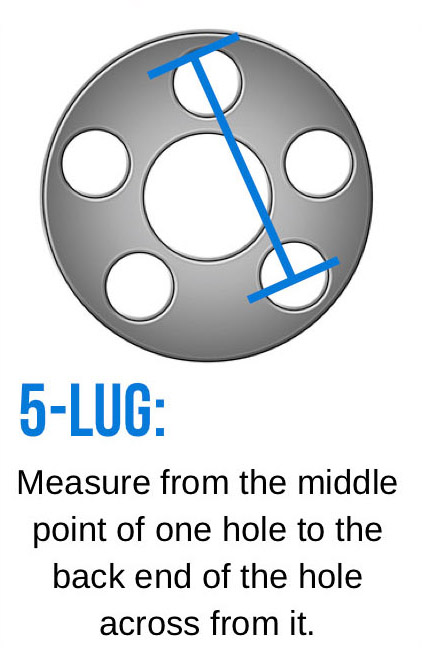
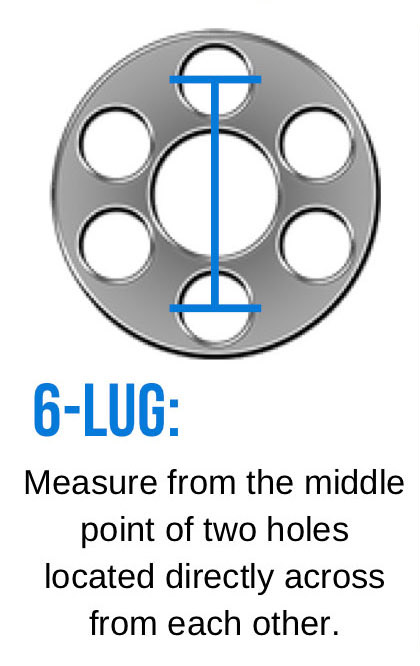
Use a caliper or ruler to get the most accurate measurements of the bolt circle diameter.
Conclusion
Throughout the long span of its operation, Ford F150 has changed the lug pattern twice (the first one in 1997 and the second in 2004).
Keep in mind the measuring tips to confirm your model’s exact bolt pattern, and write to us (or consult Ford’s team) if you still feel confused about the arrangement of lugs on your current tire assembly.

